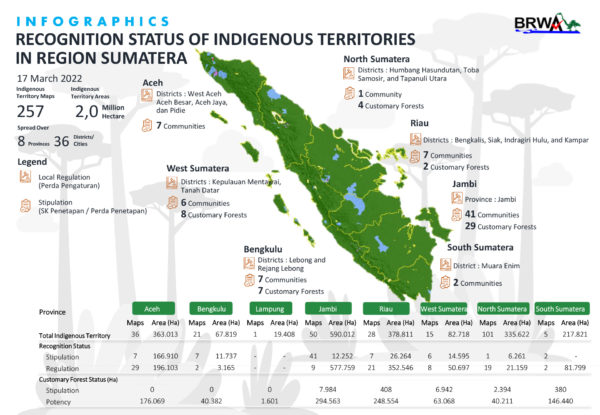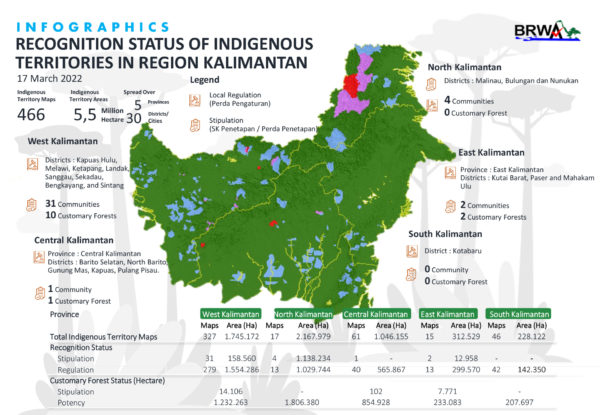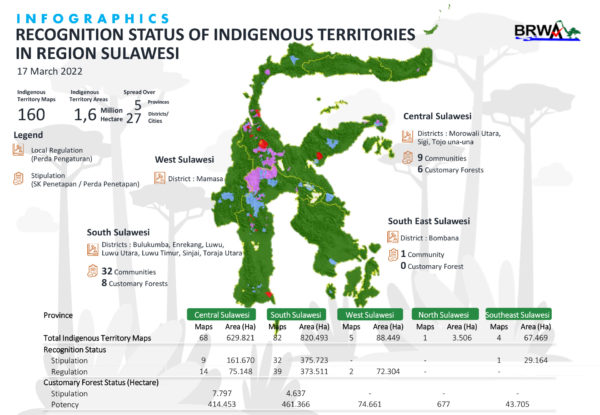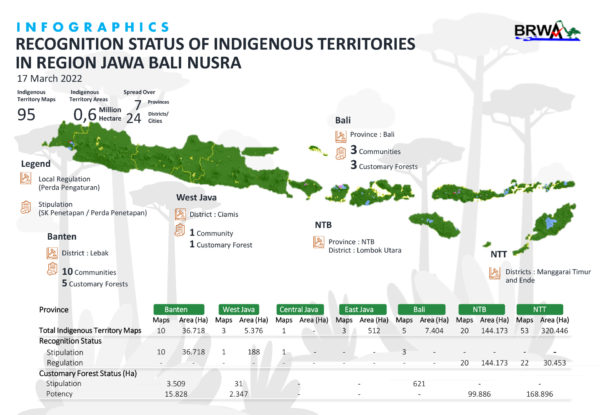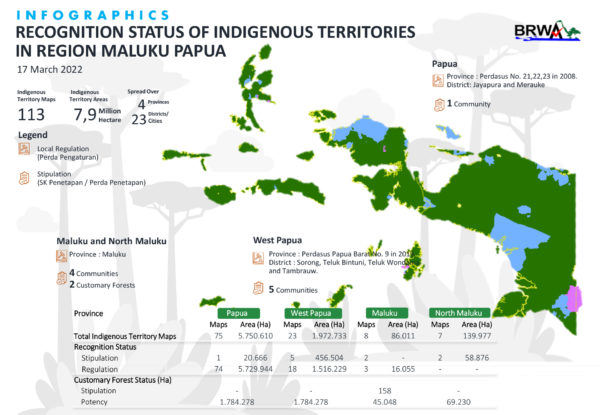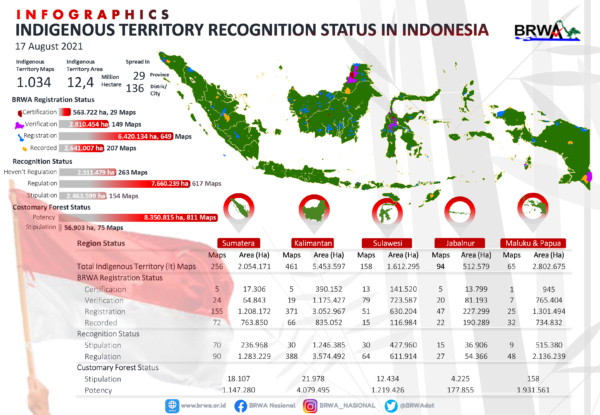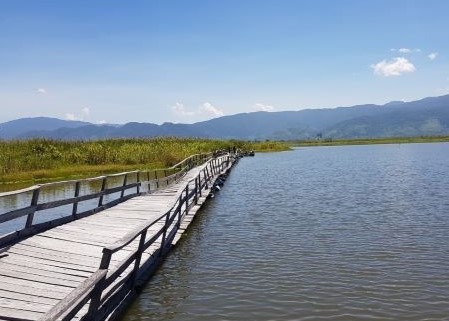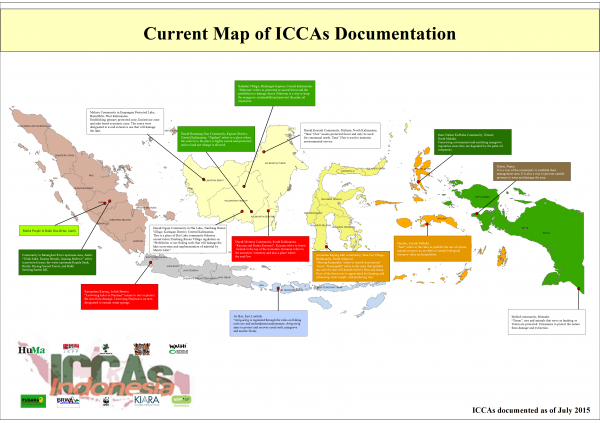Indonesia’s government is yet to recognize more than 99 percent of the potential customary forests recorded by Indigenous communities
First published on 04/12/2022, and last updated on 04/30/2022
Shared by Working Group for ICCAs in Indonesia (ICCA Consortium Member)
Indonesia has recently published updated information about the status of recognition of Indigenous territories and customary forests.
In celebration of Indonesia’s 23rd Indigenous Peoples of the Archipelago Awakening Day (March 17), the Ancestral Domain Registration Agency (Badan Registrasi Wilayah Adat- BRWA) has released the latest data on the ‘‘Recognition Status of Indigenous Territories in Indonesia’’ sourced from the BRWA’s Indigenous Territories Registration System.
For the six month till February this year, Indigenous territory maps registered by BRWA increased by five million hectares, from 12.4 million hectares to 17.6 million hectares. This is a 41% increase since the previous data release.
The increase in the coverage of Indigenous territory is contributed mainly by mapping done in the Papua region.
BRWA’s Indigenous Territories Registration System records data and information regarding the Indigenous Peoples and their customary territories. BRWA carries out standardization of spatial data (maps) and social data (profiles) of Indigenous Peoples through registration, verification, and certification of Indigenous territories.
For detailed national and regional data on the status of recognition of Indigenous territories and customary forests, please see this infographic
Until now, BRWA has registered 1,091 maps of Indigenous territory covering a total area of approximately 17.6 million hectares spread over 29 provinces and 141 regencies/ municipalities.
In Indonesia, the recognition of Indigenous Peoples and their territory is first carried out through regional policies at the provincial and district/municipality levels. This is done by issuing a local regulation that can either directly acknowledge the Indigenous community and their territory (stipulation) or set the procedure for recognition (regulation) — in which case a Regent decree is usually required to complete the recognition process.
Out of these 17.6 million hectares registered by BRWA, about 15.28% or 2.69 million hectares have been recognized by local authorities at the sub-national level, amounting to 176 Indigenous territories.1
Another 12.79 million hectares covering 667 Indigenous territories are in provinces having issued a local regulation on the general recognition process — but still requiring a local decree for recognition of particular territories. For the remaining 2.15 million hectares that have been mapped, there is not yet any local decree/regulation for recognition.2
At the national level, the extent of recognition of customary forests by the Ministry of Environment and Forestry (MoEF) has also increased, although not significantly. So far, the MoEF has issued 89 decrees recognizing customary forests covering a total area of 89,783 hectares. This is only about 0.65% of the current potential of 13.76 million hectares for customary forests recorded by BRWA.
On the other side, these recognized customary forests are still far from the official indicative number of customary forests released by the MoEF, which amounts to 1,152,600 hectares. Most of these indicative customary forests recorded by the MoEF have fulfilled the requirements for Indigenous territory recognition at the sub-national level, with the issuance of a local regulation or regent decree.
So, the MoEF needs to immediately carry out technical verification of the customary forests that the Indigenous communities have submitted for recognition.
Detailed national and regional data on the status of recognition of Indigenous territories and customary forests can be seen in this infographic.
1 Regional policies that directly acknowledge the existence of Indigenous Peoples and their territory can either be a Regent Decree (SK Penetapan) or a Local Regulation (Perda Penetapan). Such policy doesn’t require any further step at the local level.
2 Regional policies that set the procedure to recognize Indigenous Peoples and their territory require further steps to be taken, such as a Regent Decree setting up an Indigenous Task Force (SK Panitia MHA) responsible for the processing of the Indigenous People’s recognition at the regional level, and a final decree to stipulate the existence of Indigenous Peoples and their territory.

